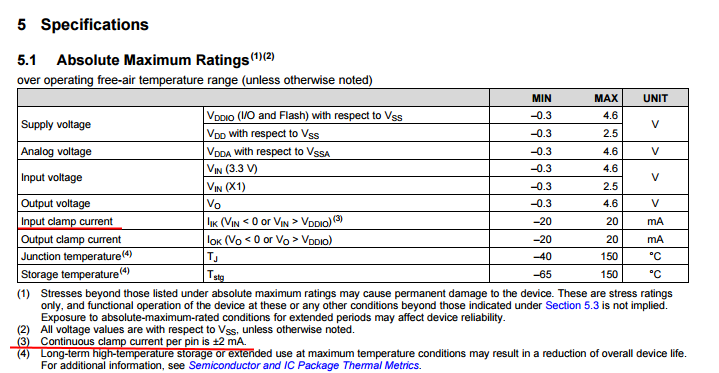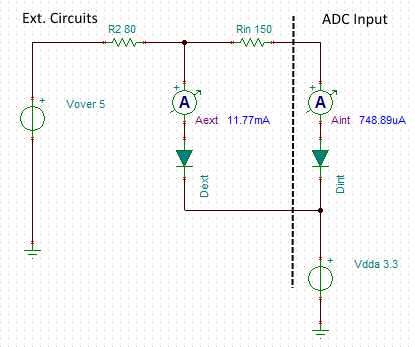Hello,
I have a question about how to protect ADC input pins for F2802x/3x.
MIN value of Absolute MAX rating for ADC input pins is -0.3V.
To protect these pins, using Schottky diode is one of the option.
But schottky diode has large leakage current and it could cause additional ADC error.
Do we have any other recommendation?
Regards,
Satoshi Obata



